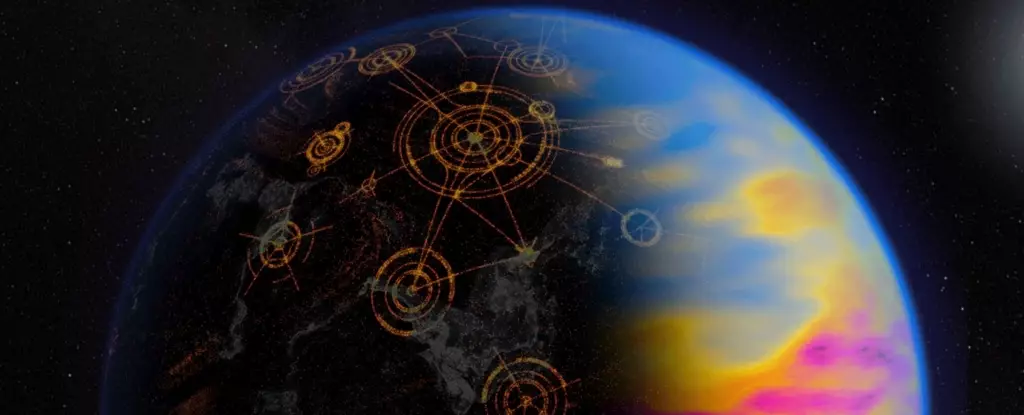

The search for extraterrestrial life has been ongoing for decades, with scientists looking for any signs of intelligent civilizations beyond our own. However, despite the age and size of the Milky Way, the fact that we have not yet found any concrete evidence of alien life raises the question – are they simply too advanced for us to detect? A new study suggests that this might be the case, highlighting the challenges in identifying technologically advanced civilizations in the cosmos.
Researchers in the US conducted a study to determine whether advanced telescopes could detect the presence of extraterrestrial life by looking for signs of solar panels on Earth-like exoplanets. The simulation revealed that a telescope could indeed spot solar panels from 30 light-years away, but with some limitations. The study found that approximately 23 percent of a planet’s land would need to be covered with solar panels for them to be visible, and the telescope would require hundreds of hours to differentiate the signal from background noise. This suggests that detecting very advanced civilizations may be just as challenging as finding those at a less advanced technological level.
The findings of this study have significant implications for the Fermi Paradox, which questions the disparity between the likelihood of extraterrestrial life in the universe and the absence of concrete evidence. The vastness and age of the Milky Way statistically suggest that there should be numerous intelligent civilizations that have colonized star systems or even spread across the galaxy. However, the lack of detectable technosignatures such as solar panels raises new possibilities, including the idea that civilizations may not feel compelled to expand across the galaxy due to achieving sustainable population and energy levels within their own stellar systems.
One popular concept in the search for extraterrestrial life is the Dyson Sphere, a hypothetical megastructure that involves building a massive ball of solar panels around a star. However, the new study suggests that such large-scale stellar-energy harvesting structures may no longer be relevant due to technological advancements. The idea of galaxy-spanning civilizations may not hold true if civilizations can achieve sustainable energy usage levels within their own star systems or neighboring ones.
The search for extraterrestrial life poses numerous challenges, particularly in detecting technologically advanced civilizations that may not exhibit easily identifiable technosignatures such as solar panels. The implications of the new study shed light on the possibility that civilizations may not need to expand across the galaxy to achieve sustainable energy levels. As the search for alien life continues, scientists are continually reevaluating their approach to identifying potential signs of extraterrestrial intelligence in the vast cosmos.
Rogue waves have long been a subject of fascination and terror in maritime lore. These…
As the world grapples with public health challenges, especially those posed by infectious diseases, the…
The Sombrero Galaxy, also known as Messier 104, embodies a breathtaking blend of spirals and…
In recent advances in quantum electronics, a groundbreaking discovery leveraging the concept of kink states…
In the intricate tapestry of nature, ice often exists in a delicate balance with liquid…
In an astonishing event that captured global attention, a rogue object from beyond our Solar…
This website uses cookies.